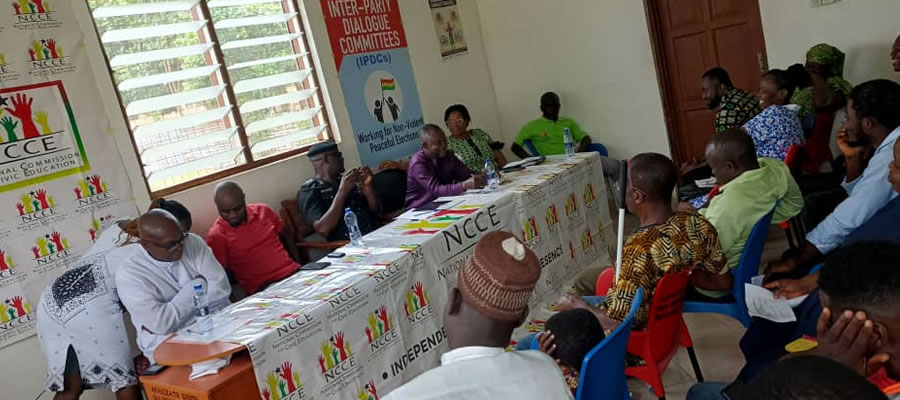

Introduction
Population size, composition and age-sex structure are useful variables in determining labour force and the provision of necessary social amenities such as schools, health facilities and housing units needed to improve the living condition of the people. This chapter highlights information on the population size and distribution, age- sex structure, migration, fertility and mortality pertaining to the Afadzato South District.
Population Size and Distribution
The total population of the District per the 2010 Population and Housing Census is 95,030 with the males numbering 46,272 and constituting 48.7 percent while females numbering 48,758 form the remaining 51.3 percent. The population of the District constitutes 4.5 percent of the regional population. The District has more of its people in the rural areas (81.3%) compared to those in the urban areas (18.7%).
Age Sex Structure
Basic features of any given population include age and sex. Age-Sex structure specifies the number of males and females in a population. Table 2.1 shows that at birth male population is higher (52.0%) than that of the female population (45.7%) for age group 0-19 years. However, from ages 20 years and older, females are more (54.3%) than the males (48.0%). The population aged 0-14 years constitutes 38.5 percent while population aged 15-64 years is 54.1 percent and those aged 65 years and older is 7.4 percent.
Dependency ratio
The dependency ratio is the number of people (child and old age) who depend on every 100 population in the working age group (15-64 years). Dependency ratio therefore, is considered as an important indicator of socio-economic development. The overall dependency ratio is 84.7 for every 100 working population in the active age group (Table 2.1). Male dependency ratio is 89.4 compared to 80.4 for females.
Sex Ratio
The sex ratio of a population measures the number of males to females in the population, the balance of the sexes be100.District has a sex ratio of 94.9 males to 100 females.
Migration
Migration refers to the movement of people from one place to another for economic or social reasons. The importance of migrant labour is desirable and necessary to sustain economic growth. Migration is important for the transfer of manpower and skills and provides the needed knowledge and innovation for development.
Table 2.5 gives account of birthplace by duration of residence of migrants in the District. The Table shows that migrants are 30.6 percent of the District population(computed from Table 2.5). Majority of the migrants were born elsewhere in the Region (74.6%) followed by those born elsewhere in another Region (17.4%). Only 8.0 percent of the migrants are born outside Ghana.
The Table further shows that majority of migrants born elsewhere in the Region have stayed 1-4 years (30.1%) whilst those who stayed less than 1 year constitutes 15.0 percent. The proportion of migrants born outside Ghana and have stayed 1-4 years (27.3%) is almost equal to those who have stayed 20 years and above (27.7%). In general, 15.5 percent of all migrants stayed for less than 1 year, 30.8 percent stayed 1-4 years and 16.8 percent stayed for 5-9 years. This implies that the migrant population decreases after the fourth year
Date Created : 11/17/2017 4:03:39 AM











 facebook
facebook
 twitter
twitter
 Youtube
Youtube
 +233 593 831 280
+233 593 831 280 0800 430 430
0800 430 430 GPS: GE-231-4383
GPS: GE-231-4383 info@ghanadistricts.com
info@ghanadistricts.com Box GP1044, Accra, Ghana
Box GP1044, Accra, Ghana